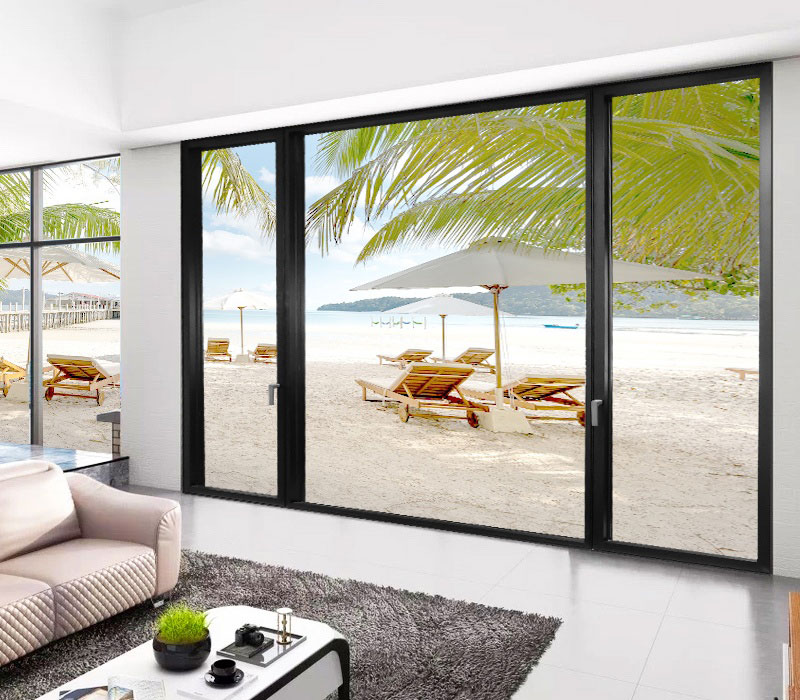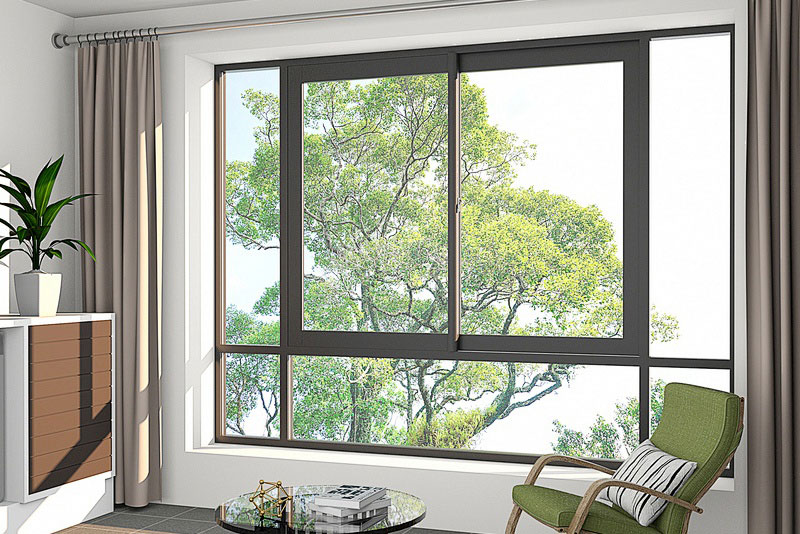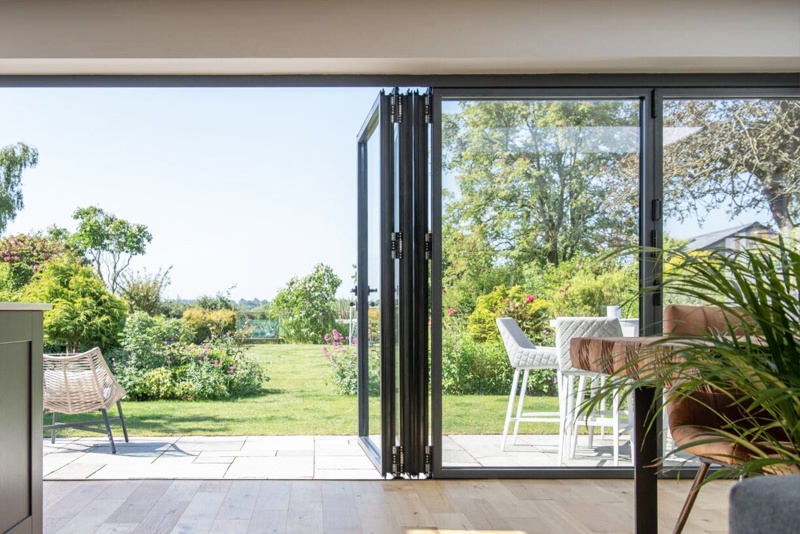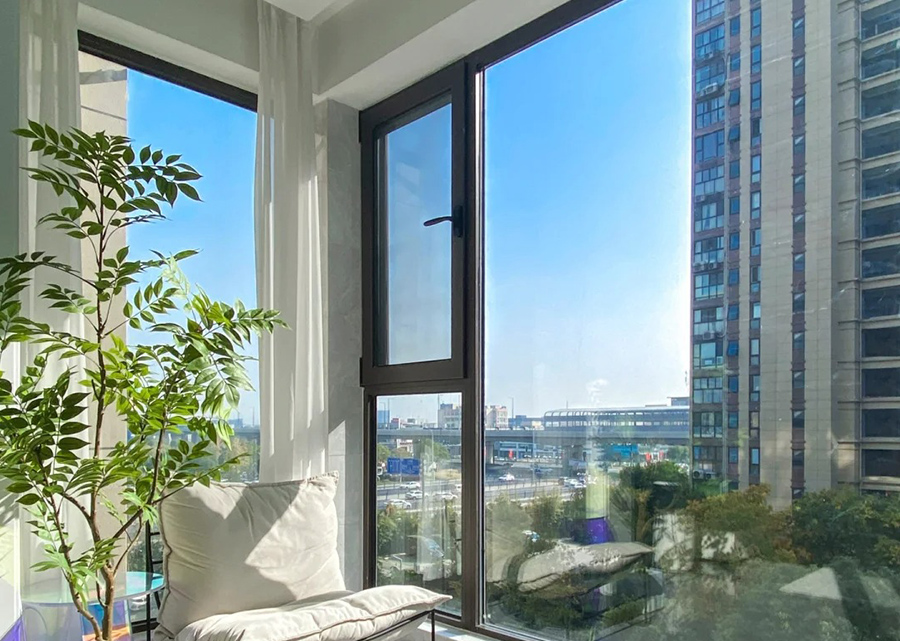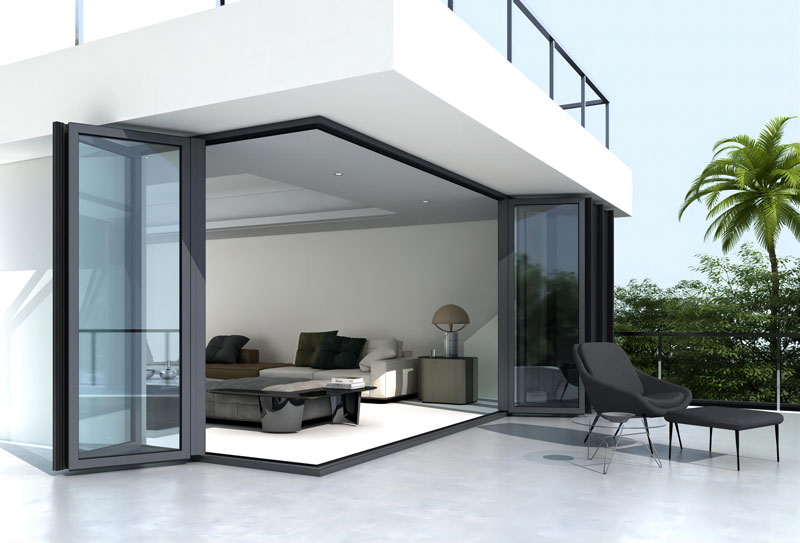Picking the Perfect Windows for Your Home Office
Getting your home office right starts with smart window choices. The windows you pick shape your natural light, air quality, and even your focus. Key options to consider: picture windows for great views and loads of light, tilt windows (or micro-vent systems) for fresh air control, and sliding windows to save space. Knowing these types helps you build a workspace that’s both comfortable and productive. Let’s break down how to choose wisely.
Boost Your Workday with Natural Light
Good natural light keeps you focused, eases eye strain, and lifts your mood. Your windows control how much – and how well – that light comes in.
Open Up the View with Picture Windows
Picture windows are big, fixed glass panels that frame your outdoor view beautifully. They pour daylight into your office. Put them opposite your main desk area to cut down on screen glare. North-facing ones give you soft, steady light all day – perfect for computer work. South-facing windows bring in brighter light, but you might need blinds around midday.
That big glass makes the room feel open and inspiring, connecting you to the outdoors and fighting off that “boxed-in” feeling. Go for clear low-e glass to get the most light in. Skip tinted glass for a home office – it can make things feel too dim.
Where You Place Windows Matters
Think carefully about where picture windows go. Side windows often work better than ones right in front of you – they give more even light with less glare. Pair big fixed glass with smaller windows you can open to get both light and fresh air.
Skylights or high clerestory windows add light from above without using up wall space – super handy in a small office. Just make sure they’re installed properly to avoid leaks.
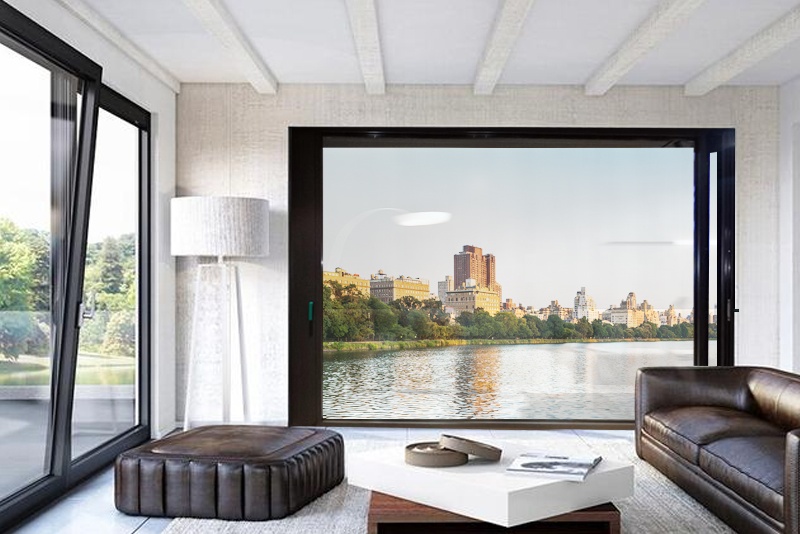
The inward-opening and inward-tilting casement Windows installed in the living room improve ventilation efficiency
Fresh Air Without the Distraction
Stuffy air makes you tired, but drafts blowing on you wreck your focus. Tilt ventilation (or micro-ventilation) is the smart fix.
What’s Tilt Ventilation (Micro-Ventilation)?
These windows open just a crack at the top (tilt mode). This lets air swap out slowly and steadily. No strong drafts hit your desk, but humidity and stuffiness sneak away. You stay comfy longer, with zero noise or wind bother.
You find this feature on tilt-and-turn windows or casement windows. Some sliding windows also have a “comfort vent” or small opening mode.
Why It’s Great When You Need to Concentrate
A steady trickle of fresh air keeps your head clear. These small vents stop CO₂ from building up without sudden chills or slamming sounds. Use them during calls or deep work sessions – people on the other end won’t hear street noise.
Pair them with an air quality monitor. Smart sensors can even adjust the vents automatically to keep the air feeling just right.
Making the Most of Tight Spaces
Home offices are often squeezed for room. Every inch counts. Sliding windows are stars here.
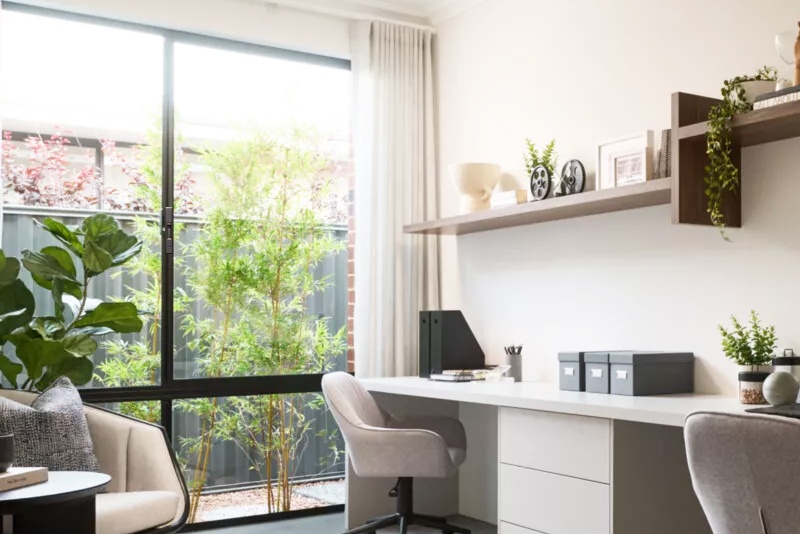
The sliding window in the study provides bright light and a wide view
Sliding Windows: The Space Savers
Sliding windows glide open sideways. They don’t swing in or out, so you don’t need any clearance space. This means total freedom for furniture – you can tuck your desk right under the window with no worries. A lifesaver for narrow rooms or awkward corners.
Modern sliders have really slim frames. You get maximum view and they look sharp. Look for thermally broken aluminum frames – they keep the heat in (or out) and won’t rust.
Clever Window Combos
Try a sliding window behind your desk paired with a picture window beside it. This combo saves space while delivering light and air.
Use sliding doors to a balcony to blend indoor and outdoor work zones. Go for triple-pane glass – it cuts way down on noise from busy streets (super helpful in apartments).
Keeping Noise Out & Comfort In
A quiet home office and steady temperatures are must-haves. Your windows are key players here.
Beating the Noise
Traffic or neighbor noise kills concentration. Blocking it is crucial. Double or triple-pane glass is non-negotiable. Laminated glass adds extra mass that really dampens sound.
Sliding windows with thick glass are great noise blockers. Make sure they seal tight when closed. Using panes of different thicknesses (asymmetrical glazing) helps scramble sound waves too.
Staying Comfy Year-Round
Drafts or overheating tank your productivity. Energy-efficient windows stop this.
Low-e coatings bounce back summer heat but let winter sun warmth through. Filling the gap between panes with argon gas boosts insulation and lowers heat loss (the U-value). In colder spots, triple glazing holds heat best. Warm-edge spacers around the glass stop condensation on the frame.
Safety & Easy Operation
Ground-floor offices need security; easy-to-use windows matter everywhere.
Keeping It Secure
Ground-level offices need protection. Laminated glass is tough to break through. Tempered glass breaks safely into small chunks if it does shatter.
Built-in sensors add security. Some sliding window systems have alarms that trigger if the glass is hit. You can also add child safety locks if needed.
Effortless Everyday Use
Hard-to-reach windows are annoying. Motorized openers fix this – open or close them with a remote or app without leaving your chair.
Look for smooth-gliding mechanisms. Quality hardware is essential. Stick with trusted brands for reliable, everyday performance.
Matching Your Home’s Style
Your office should flow with your home’s look. The windows need to fit.
Fitting Modern Homes
Clean-lined, contemporary homes suit minimalist designs. Choose sliding windows with ultra-slim frames. Black or dark gray frames pop nicely against light walls.
Big picture windows keep the lines clean and the outside looking tidy.
Blending with Traditional Homes
Cottages or classic homes need a different touch. While casement windows are charming, sliding windows come with realistic wood-grain finishes. Pick white or bronze tones to match your existing trim details.
Picking Colors & Finishes
Frame color affects the room’s feel and style. White keeps things bright and airy; black makes a bold, modern statement; wood tones add warmth.
Match the handles and hardware finishes to pull the whole look together.
Kanod: Smart Windows for Your Home Office
Kanod offers top-notch solutions for home offices, blending great looks with smart function.
Kanod’s sliding windows have super-narrow frames for amazing views. Their triple-glazed units achieve excellent U-values (as low as 0.70 W/m²K), keeping you comfortable all year.
Their tilt ventilation brings in fresh air gently, without drafts. Built-in security features meet high standards, and child locks are available. They make custom sizes to fit unique spaces, using finishes that resist fading and wear.
Wrapping Up:
Choosing the right windows for your home office shapes how you work every day. Focus on picture windows for light, tilt/micro-vent systems for fresh air, and sliding windows to save space – all while balancing security and quiet.
Kanod nails it in every area, combining clever engineering with thoughtful design.
Pick the right windows now. Enjoy better productivity and comfort for years. Create a workspace that inspires you and supports doing your best work.
![Validate my RSS feed [Valid RSS]](https://www.kanodwindows.com/wp-content/themes/knmc/images/valid-rss-rogers.png)





